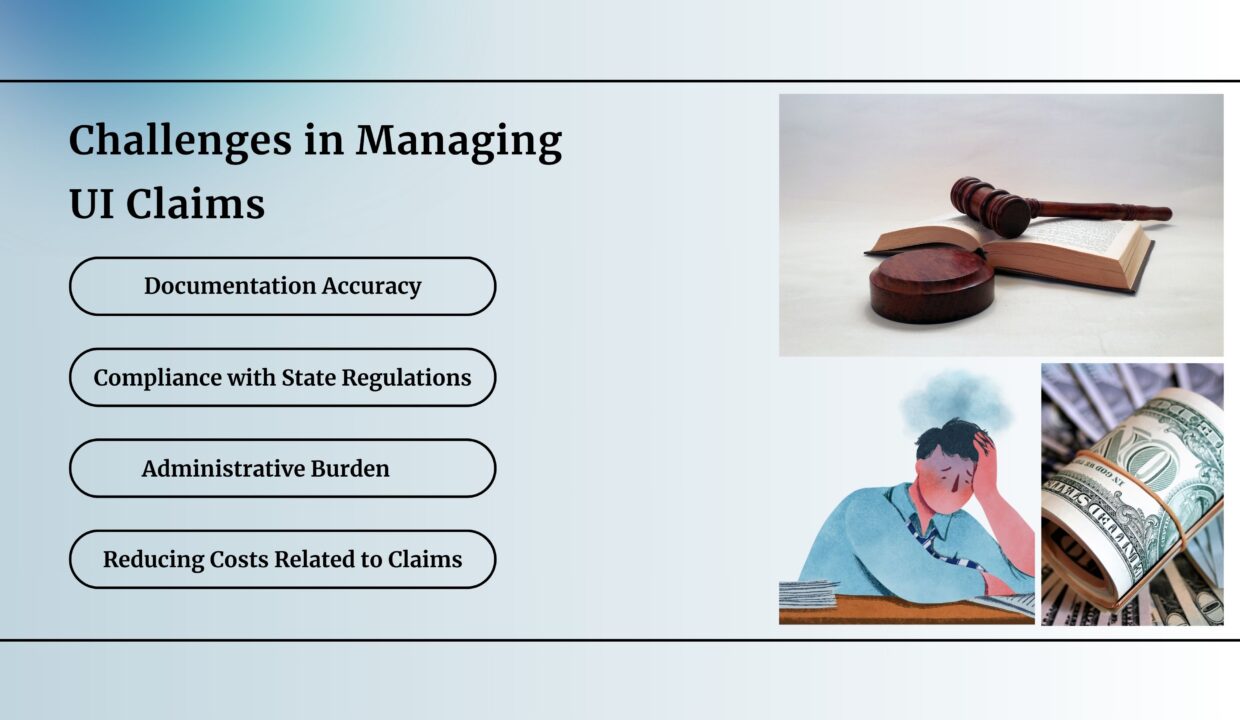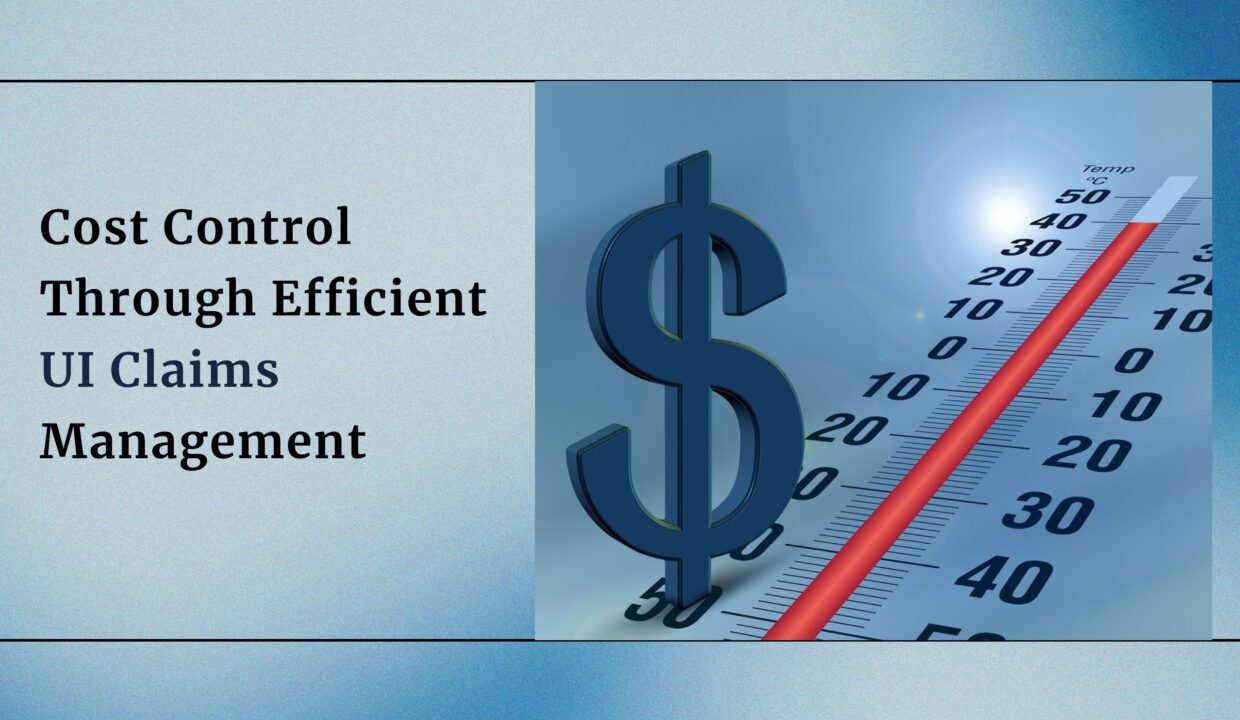In today’s dynamic job market, Unemployment Insurance claims, or UI claims in America, have become a critical focus for many companies, especially in the face of economic changes. unemployment insurance claims can impact a business financially and legally if not managed correctly. This blog will explore the essentials of unemployment insurance claims, break down the UI claim process, and provide insights on how HR solutions and hr automation software can help companies efficiently handle these claims.
What Are Unemployment Insurance Claims?
Unemployment insurance claims (UI claims) are applications filed by former employees to receive temporary financial assistance after they leave a company, typically due to job loss. Funded by both federal and state programs, these claims provide financial support to individuals while they seek new employment.
As employers, businesses contribute to the unemployment insurance system, and claim approvals can impact these contributions. Managing unemployment insurance claims efficiently can therefore reduce costs associated with employee turnover and unemployment insurance taxes.
Related Article: 3 Ways Automation Can Enhance Your Unemployment Claims Management
The Step-by-Step Process of a UI Claim
Understanding the Unemployment insurance claims process helps employers better anticipate and manage their involvement. Here are the primary steps:
1. Claim Filing
The first step in the unemployment insurance claims process is when a former employee files a UI claim. This is typically done through a state’s labor department, where they submit personal and employment details.
2. Verification of Employment
After the claim is filed, the employer verifies the employee’s work details, last pay, and reason for separation. This step can be streamlined through HR automation software, which enables quick and accurate verification, minimizing delays.
3. Eligibility Determination
The state agency reviews the claim and determines eligibility based on the reason for job separation, earnings, and other criteria. HR solutions that incorporate automated workflows help ensure accurate data transfer, reducing errors and keeping the process smooth.
4. Employer’s Response
Employers receive a notice to respond to the claim. If the reason for separation conflicts with the former employee’s claim, the employer must respond with supporting documents. HR automation software can assist in providing timely responses by automating reminders and document retrieval.
5. Claim Resolution
Based on all information, the unemployment insurance claim is either approved or denied by the state agency. If approved, the former employee receives UI benefits. If denied, they may appeal, requiring additional steps in the process.
Challenges in Managing UI Claims and How Automation Solves Them?
The Challenges in Managing Unemployment Insurance Claims:
Effectively handling unemployment insurance claims comes with its challenges:
- Documentation Accuracy: Employers must have detailed records to support or contest a UI claim. Missing or incorrect documentation can lead to costly approvals.
- Compliance with State Regulations: unemployment insurance claims are managed by state agencies, and requirements vary by state. Ensuring compliance is crucial to avoiding penalties.
- Administrative Burden: Managing unemployment insurance claims is often time-consuming. This process can be a major drain on resources for companies with a high volume of claims.
- Reducing Costs Related to Claims: Employers are often financially responsible for approved claims. Effectively managing these claims can help reduce tax rates and save money.

The HR Solutions for Managing Unemployment Insurance Claims
To address these challenges, many companies turn to hr solutions designed to streamline unemployment insurance claims management. HR solutions simplify the handling of UI claims by providing tools to maintain accurate records, improve compliance, and expedite the claims process. Key features include:
- Centralized Data Management: HR solutions allow employers to store all necessary documentation in one location. This makes it easy to access employee records, saving time when responding to claims.
- Automated Notifications and Alerts: With automated alerts, HR solutions ensure companies respond to claim notifications on time, reducing the risk of default approvals.
- Seamless Recordkeeping: Comprehensive HR solutions maintain secure, accessible records of all employment and separation information, essential for unemployment insurance claims management responses.
- Appeal Support: HR solutions can provide automated guidance on the appeals process, improving the accuracy and effectiveness of employer responses to unwarranted claims.
Related Article: The Impact of Workforce Analytics on Reducing Unemployment Insurance Claims
The Benefits of Using HR Automation Software in UI Claims Management
HR automation software takes claims management a step further by eliminating manual tasks and reducing human error. Here’s how hr automation software supports unemployment insurance claims:
- Automated Claim Tracking: By using HR automation software, companies can track the progress of every UI claim and receive real-time updates and alerts.
- Streamlined Documentation: Automation ensures that all documentation is prepared and submitted without delays. This is particularly useful in states with strict timelines for employer responses.
- Compliance Assurance: With hr automation software, employers can stay updated on state-specific requirements and comply with ever-changing regulations.
- Data Analytics for Cost Savings: Some hr automation software platforms provide data analytics to identify patterns in claims, helping companies develop strategies to reduce unemployment insurance claims over time.
By leveraging hr automation software, companies can reduce the manual workload involved in unemployment insurance claims and focus on core HR functions, all while reducing costs and minimizing risks.
Related Article: Unemployment Claims Management: A Burden or a Managed Expense?
Cost Control Through Efficient UI Claims Management
Effectively managing UI claims can directly impact a company’s bottom line. Here’s how:
Lowering Unemployment Insurance Tax Rates: When a company’s UI claims rate is high, the state may increase its unemployment insurance tax rate. By handling claims more efficiently and reducing their frequency, companies can save on tax costs.

- Minimizing Penalties: Missing deadlines or failing to provide adequate documentation can lead to penalties. HR automation software helps ensure timely and accurate responses to claims.
- Reducing Turnover-Related Costs: Efficient unemployment insurance claims management helps businesses identify patterns and take proactive measures to improve employee retention, thus reducing turnover costs and claims.
Related Article: Don’t Let Unemployment Claims Drain Your Business: A Guide to Cost Management
Conclusion
UI claims are a necessary aspect of workforce management, but they don’t have to be a drain on company resources. Companies can handle unemployment insurance claims more efficiently and cost-effectively by understanding the UI claim process and leveraging modern HR solutions and hr automation software. This minimizes errors, saves time, and helps businesses lower costs associated with UI claims. Embracing automation in claims management ultimately empowers businesses to stay compliant, protect their finances, and focus on growth.
We at Walton Management offer tailored UI claims management and Unemployment Tax Planning services to help businesses streamline the process, reduce tax impacts, and minimize penalties. Our expert team and cutting-edge automated Hr solutions ensure compliance, save time, and protect company finances. Contact us or book an appointment to learn more about our effective solutions for UI claims and cost management.

